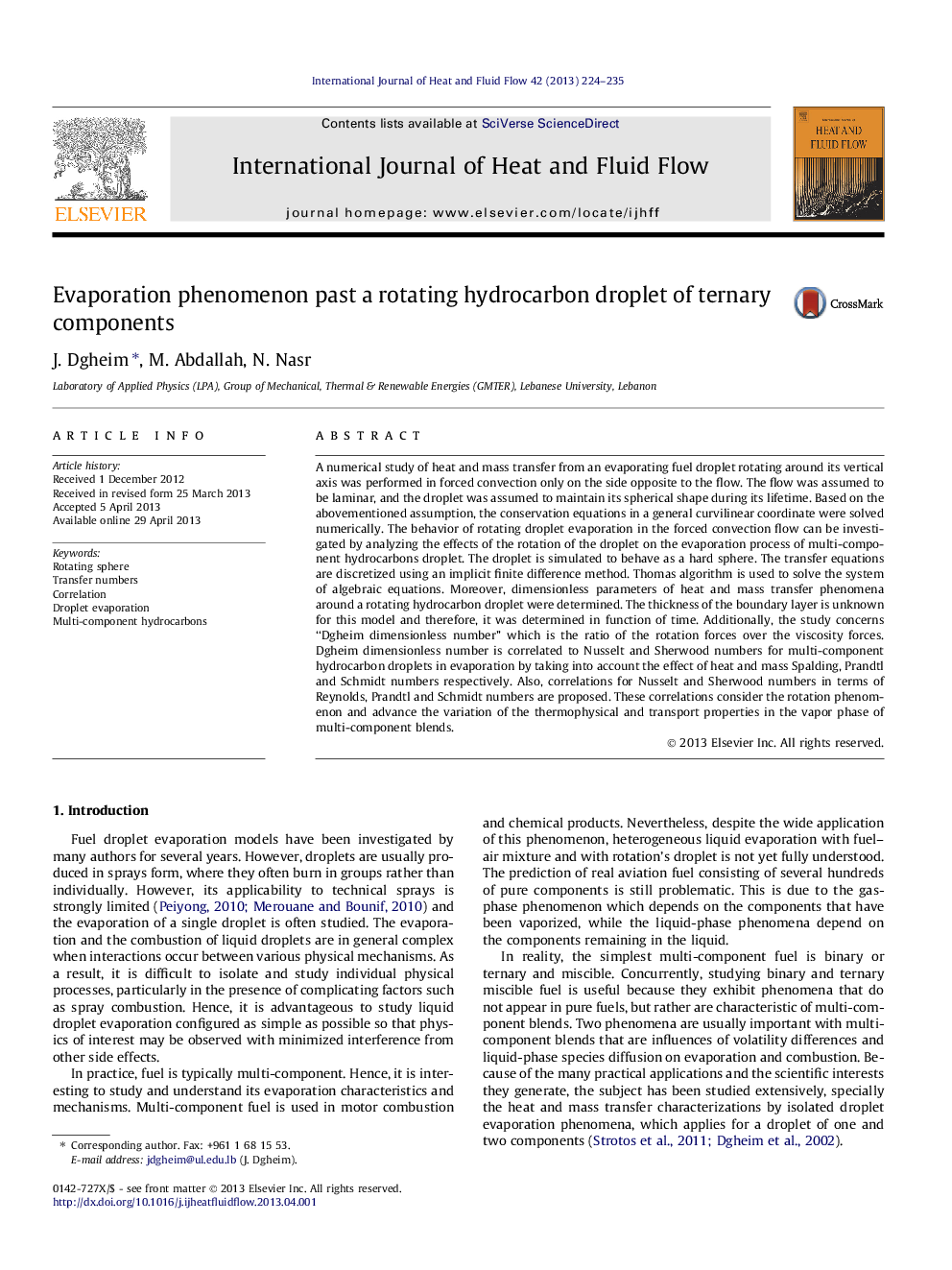| Article ID | Journal | Published Year | Pages | File Type |
|---|---|---|---|---|
| 655608 | International Journal of Heat and Fluid Flow | 2013 | 12 Pages |
•Dgheim dimensionless number is created.•The spinning velocity does not strongly influence on Nusselt and Sherwood numbers.•The spinning velocity adjusts thermal and hydrodynamic boundary layers.•Nusselt number as function of thermal Dgheim number is proposed.•Sherwood number as function of mass Dgheim number is proposed.
A numerical study of heat and mass transfer from an evaporating fuel droplet rotating around its vertical axis was performed in forced convection only on the side opposite to the flow. The flow was assumed to be laminar, and the droplet was assumed to maintain its spherical shape during its lifetime. Based on the abovementioned assumption, the conservation equations in a general curvilinear coordinate were solved numerically. The behavior of rotating droplet evaporation in the forced convection flow can be investigated by analyzing the effects of the rotation of the droplet on the evaporation process of multi-component hydrocarbons droplet. The droplet is simulated to behave as a hard sphere. The transfer equations are discretized using an implicit finite difference method. Thomas algorithm is used to solve the system of algebraic equations. Moreover, dimensionless parameters of heat and mass transfer phenomena around a rotating hydrocarbon droplet were determined. The thickness of the boundary layer is unknown for this model and therefore, it was determined in function of time. Additionally, the study concerns “Dgheim dimensionless number” which is the ratio of the rotation forces over the viscosity forces. Dgheim dimensionless number is correlated to Nusselt and Sherwood numbers for multi-component hydrocarbon droplets in evaporation by taking into account the effect of heat and mass Spalding, Prandtl and Schmidt numbers respectively. Also, correlations for Nusselt and Sherwood numbers in terms of Reynolds, Prandtl and Schmidt numbers are proposed. These correlations consider the rotation phenomenon and advance the variation of the thermophysical and transport properties in the vapor phase of multi-component blends.
